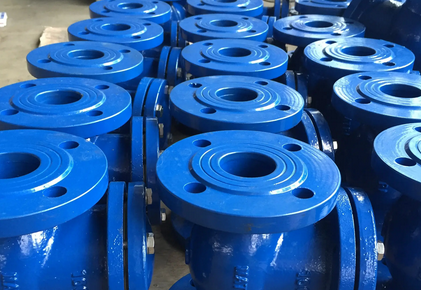Function and selection of centrifugal pump outlet check valve
The outlet check valve of a centrifugal pump plays a vital role in the pump system. Its main functions and selection principles are as follows:
1. The role of the centrifugal pump outlet check valve
Prevent liquid backflow: When the centrifugal pump stops running, the check valve can be quickly closed to prevent the liquid in the outlet pipeline from flowing back into the pump, avoiding the formation of water hammer, thereby protecting the impeller in the pump from damage.
Protect the pump and other equipment: Preventing liquid backflow not only protects the pump itself, but also prevents damage to other storage tanks or equipment caused by liquid backflow, especially in the high-level tank system, preventing damage to the tank body caused by backflow.
Stabilize system pressure: During the operation of the pump, the check valve helps to maintain the stability of the system pressure and prevent system instability or damage caused by pressure fluctuations.

2. Selection principles of centrifugal pump outlet check valve
Select according to the pipeline diameter:
For pipelines with smaller diameters of pump outlet pipelines (DN≤50mm), a lifting check valve should be used. This check valve has a simple structure and good sealing performance, and is suitable for small-diameter pipelines.
For pipelines with larger diameters (DN>50mm) at the pump outlet, a swing check valve should be used. Swing check valves have low fluid resistance and are not restricted in installation position, making them suitable for larger diameters.
Consider installation method:
Swing check valves can be installed horizontally or vertically, but for swing check valves larger than 80mm, horizontal installation is recommended to reduce the impact caused by the valve disc returning to its seat.
For pipelines with a diameter greater than or equal to 150mm, a bypass should be set before and after the check valve to prevent the pressure before the valve from rising too high and causing damage to the sealing surface of the check valve. If a bypass cannot be set, a safety valve or an air/inert gas buffer tank can be considered as an alternative.
Consider medium characteristics:
Check valves are generally suitable for clean media and are not suitable for media containing solid particles and high viscosity. If the medium contains impurities or has high viscosity, a check valve with a special structure needs to be selected, such as a check valve with a filter or a seal made of special materials.
Consider system requirements:
In some special working conditions, if it is necessary to prevent high-pressure materials from flowing back to the low-pressure system, other safety measures can be added on the basis of the check valve, such as closing the discharge valve by interlocking when the pump or compressor stops, closing the discharge valve by interlocking when the discharge flow is low, etc.
Consider maintenance and overhaul:
The check valve should be installed close to the pump outlet, and a shut-off valve (such as a ball valve or gate valve) should be installed on its upper part so that it can be easily overhauled and maintained when necessary. At the same time, for check valves without drain valves, a pressure relief drain valve should be installed between it and the cut-off valve to facilitate pressure relief before disassembly.




